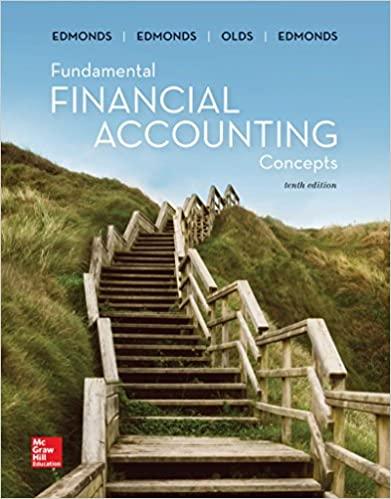Answered step by step
Verified Expert Solution
Question
1 Approved Answer
1. Randy Owen invested $6,700 at 12% annual interest, and left the money invested without withdrawing any of the interest for 10 years. At the
1. Randy Owen invested $6,700 at 12% annual interest, and left the money invested without withdrawing any of the interest for 10 years. At the end of the 10 years, Randy withdrew the accumulated amount of money. (a) What amount did Randy withdraw, assuming the investment earns simple interest? The amount Randy withdrew $ (b) What amount did Randy withdraw, assuming the investment earns interest compounded annually? (Round answer to 2 decimal places, e.g. 25.25.) The amount Randy withdrew $ 2. For each of the following cases, (1) In Table 1 (future value of 1): Annual Rate Number of Years Invested Compounded Case A 4% 6 Annually Case B 10% 6 Semiannually (2) In Table 2 (future value of an annuity of 1): Annual Rate Number of Years Invested Compounded Case A 4% 10 Annually Case B 10% 6 Semiannually Indicate to what interest rate columns you would refer in looking up the future value factor. Table 1 Table 2 Case A % % Case B % % Indicate to what number of periods you would refer in looking up the future value factor. Table 1 Table 2 Case A periods periods Case B periods periods 3. Joyce Company signed a lease for an office building for a period of 10 years. Under the lease agreement, a security deposit of $7,400 is made. The deposit will be returned at the expiration of the lease with interest compounded at 10% per year. What amount will Joyce receive at the time the lease expires? (Round answer to 2 decimal places, e.g. 25.25.) Amount at the time the lease expires $ 4. Bates Company issued $1,200,000, 10-year bonds and agreed to make annual sinking fund deposits of $79,000. The deposits are made at the end of each year into an account paying 8% annual interest. What amount will be in the sinking fund at the end of 10 years? (Round answer to 2 decimal places, e.g. 25.25.) Amount in the sinking fund $ 5. Frank and Maureen Fantazzi invested $5,800 in a savings account paying 8% annual interest when their daughter, Angela, was born. They also deposited $1,400 on each of her birthdays until she was 15 (including her 15th birthday). How much was in the savings account on her 15th birthday (after the last deposit)? (Round answer to 2 decimal places, e.g. 25.25.) Amount on 15th birthday $ 6. Hugh Curtin borrowed $33,100 on July 1, 2012. This amount plus accrued interest at 5% compounded annually is to be repaid on July 1, 2017. How much will Hugh have to repay on July 1, 2017? (Round answer to 2 decimal places, e.g. 25.25.) Amount to be repaid on July 1, 2017 $ 7. For each of the following cases, (1) In Table 3 (present value of 1): Annual Rate Number of Years Involved Discounts per Year Case A 8% 5 Annually Case B 11% 8 Annually Case C 8% 9 Semiannually (2) In Table 4 (present value of an annuity of 1): Annual Rate Number of Years Involved Number of Payments Involved Frequency of Payments Case A 11% 18 18 Annually Case B 11% 6 6 Annually Case C 8% 4 8 Semiannually Indicate to what interest rate columns you would refer in looking up the discount rate. Table 3 Table 4 Case A % % Case B % % Case C % % Indicate to what number of periods you would refer in looking up the discount rate. Table 3 Table 4 Case A periods periods Case B periods periods Case C periods periods 8. (a) What is the present value of $29,900 due 10 periods from now, discounted at 8%? (Round answer to 2 decimal places, e.g. 25.25.) Present value $ (b) What is the present value of $29,900 to be received at the end of each of 6 periods, discounted at 5%? (Round answer to 2 decimal places, e.g. 25.25.) Present value $
Step by Step Solution
There are 3 Steps involved in it
Step: 1

Get Instant Access to Expert-Tailored Solutions
See step-by-step solutions with expert insights and AI powered tools for academic success
Step: 2

Step: 3

Ace Your Homework with AI
Get the answers you need in no time with our AI-driven, step-by-step assistance
Get Started


